Refine search
Actions for selected content:
6778 results in Communications and signal processing
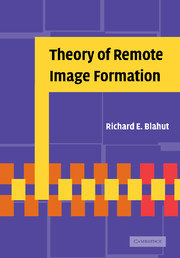
Theory of Remote Image Formation
-
- Published online:
- 19 August 2009
- Print publication:
- 18 November 2004
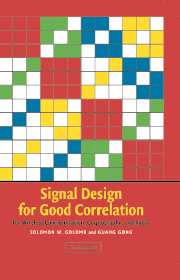
Signal Design for Good Correlation
- For Wireless Communication, Cryptography, and Radar
-
- Published online:
- 15 August 2009
- Print publication:
- 11 July 2005
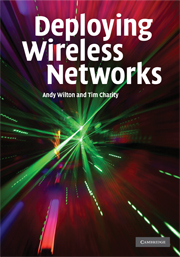
Deploying Wireless Networks
-
- Published online:
- 13 August 2009
- Print publication:
- 18 September 2008
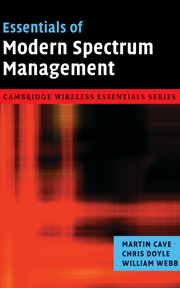
Essentials of Modern Spectrum Management
-
- Published online:
- 13 August 2009
- Print publication:
- 13 August 2007

Coexistence in Wireless Networks
- Challenges and System-Level Solutions in the Unlicensed Bands
-
- Published online:
- 12 August 2009
- Print publication:
- 14 September 2006
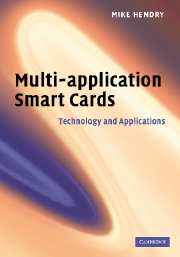
Multi-application Smart Cards
- Technology and Applications
-
- Published online:
- 11 August 2009
- Print publication:
- 28 June 2007

Essentials of Cognitive Radio
-
- Published online:
- 10 August 2009
- Print publication:
- 30 April 2009
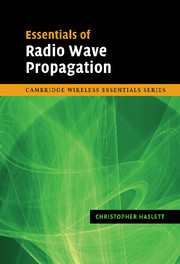
Essentials of Radio Wave Propagation
-
- Published online:
- 09 August 2009
- Print publication:
- 06 December 2007
Acronyms
-
- Book:
- Synchronization in Wireless Sensor Networks
- Published online:
- 05 August 2012
- Print publication:
- 30 July 2009, pp 214-217
-
- Chapter
- Export citation
3 - TIME SYNCHRONIZATION PROTOCOLS
-
- Book:
- Synchronization in Wireless Sensor Networks
- Published online:
- 05 August 2012
- Print publication:
- 30 July 2009, pp 15-31
-
- Chapter
- Export citation
Preface
-
- Book:
- Synchronization in Wireless Sensor Networks
- Published online:
- 05 August 2012
- Print publication:
- 30 July 2009, pp xi-xii
-
- Chapter
- Export citation
11 - ADAPTIVE MULTI-HOP TIME SYNCHRONIZATION (AMTS)
-
- Book:
- Synchronization in Wireless Sensor Networks
- Published online:
- 05 August 2012
- Print publication:
- 30 July 2009, pp 157-168
-
- Chapter
- Export citation
Index
-
- Book:
- Synchronization in Wireless Sensor Networks
- Published online:
- 05 August 2012
- Print publication:
- 30 July 2009, pp 227-232
-
- Chapter
- Export citation
13 - JOINT SYNCHRONIZATION OF CLOCK OFFSET AND SKEW IN A RECEIVER–RECEIVER PROTOCOL
-
- Book:
- Synchronization in Wireless Sensor Networks
- Published online:
- 05 August 2012
- Print publication:
- 30 July 2009, pp 177-184
-
- Chapter
- Export citation
8 - PAIRWISE BROADCAST SYNCHRONIZATION (PBS)
-
- Book:
- Synchronization in Wireless Sensor Networks
- Published online:
- 05 August 2012
- Print publication:
- 30 July 2009, pp 104-117
-
- Chapter
- Export citation
7 - COMPUTATIONALLY SIMPLIFIED SCHEMES FOR ESTIMATION OF CLOCK OFFSET AND SKEW
-
- Book:
- Synchronization in Wireless Sensor Networks
- Published online:
- 05 August 2012
- Print publication:
- 30 July 2009, pp 90-103
-
- Chapter
- Export citation
4 - FUNDAMENTAL APPROACHES TO TIME SYNCHRONIZATION
-
- Book:
- Synchronization in Wireless Sensor Networks
- Published online:
- 05 August 2012
- Print publication:
- 30 July 2009, pp 32-41
-
- Chapter
- Export citation
14 - ROBUST ESTIMATION OF CLOCK OFFSET
-
- Book:
- Synchronization in Wireless Sensor Networks
- Published online:
- 05 August 2012
- Print publication:
- 30 July 2009, pp 185-210
-
- Chapter
- Export citation
Frontmatter
-
- Book:
- Synchronization in Wireless Sensor Networks
- Published online:
- 05 August 2012
- Print publication:
- 30 July 2009, pp i-vi
-
- Chapter
- Export citation
References
-
- Book:
- Synchronization in Wireless Sensor Networks
- Published online:
- 05 August 2012
- Print publication:
- 30 July 2009, pp 218-226
-
- Chapter
- Export citation
